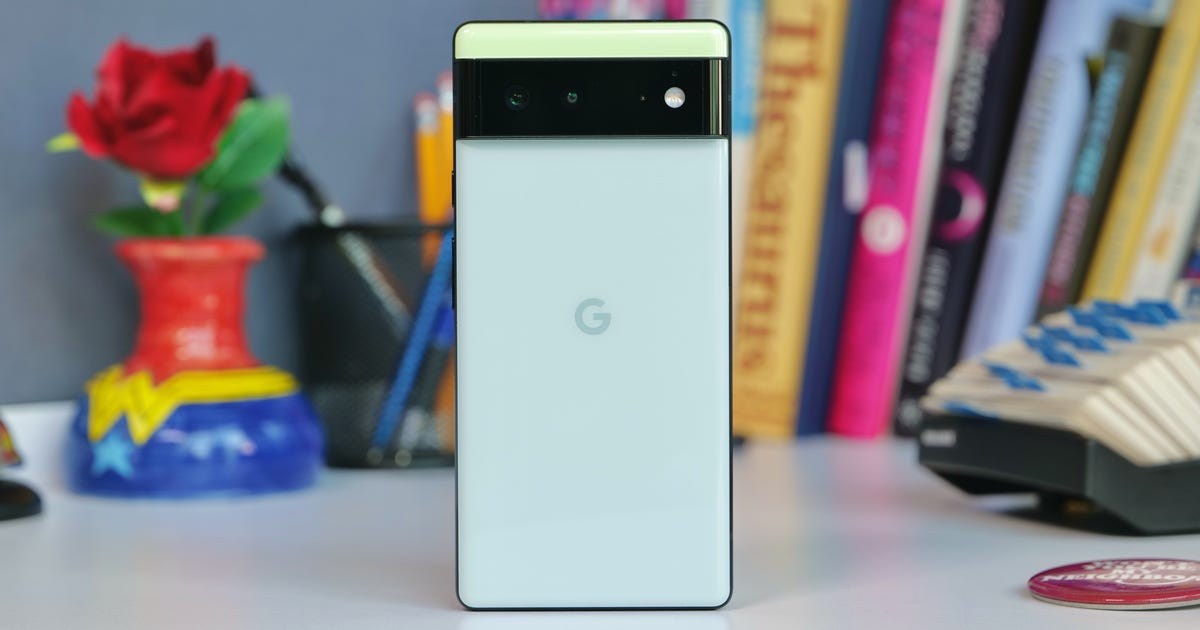
Editor’s note, Nov. 18: The combination of price, design, cameras, processor and software make the Google Pixel 6 one of the best value phones you can buy, which is why we’ve given it a CNET Editors’ Choice Award. The original review follows.
The Pixel 6 exemplifies the best of what Google services and Android 12 have to offer. So much so that I’d claim that the Pixel 6 is the most significant phone upgrade Google has made since it launched the Pixel line in 2016. The phone’s new cameras, Google’s Tensor chip and premium ambitions follow months of hype — partly stemming from Google announcing the phone months before it was released — and its bold two-tone design. All of these changes come while keeping the Pixel 6 at a midtier $599 price, which easily washes away the bad taste left by the understated Pixel 5.
Read more: The Pixel 6 is about to go on sale at Target for Black Friday
Previous Pixel phones have lived in that safe, quiet and crowded midtier space where phones cost between $600 and $800. For most people, they were good and sometimes great phones but lacked the luster, specs and appeal of more premium phones from Samsung and Huawei.
Like
- Two-tone design
- Value for the price
- The main camera is Google’s best
Don’t Like
- Under-display fingerprint reader can be frustrating
- Battery life is good, but hard to get more than a day
- The ultrawide camera is decent but not on the same level as the main camera
So what’s the problem? Well, in short, Pixel phones haven’t sold well. It reminds me of the early days when Michael Jordan joined the Chicago Bulls but they weren’t winning championships yet. The Pixel 6 is an attempt to build the phone up to be more successful and appealing. It’s like when the Bulls decided to build a team around Jordan to help him win championships.
Instead of powering the phone with a Qualcomm Snapdragon processor, Google made its own chip: Tensor. This allows the Pixel 6 to do computations and AI more securely and quickly on the phone than constantly using the cloud. Tensor opens up a slew of new software features Google wouldn’t have been able to add using a different processor.
Google extended its three years of OS and security updates to five. In the US, the Pixel 6 is available both through Google and all major carriers. And Google even created a subscription program a la Apple’s iPhone Upgrade program. It’s called Pixel Pass and costs $45 a month for two years.
Even the Pixel’s crown jewel — its cameras — got upgraded lenses and hardware that’s more premium. Now that Google has improved everything in, on and around the Pixel, is it ready for its championship? (I promise that’s the last Bulls reference.) In short, yes.
This is the Pixel phone I always wanted from Google. I spent over a week with the new phone and it lives up to a lot of the hype. The Pixel 6 starts at $599 (£599, AU$999) and comes with 128GB of storage. For that price, I can’t think of a better phone to recommend right now.
If you’re looking for an in-depth look at the Google Pixel 6 Pro, check out the review my colleague Andy Hoyle wrote.
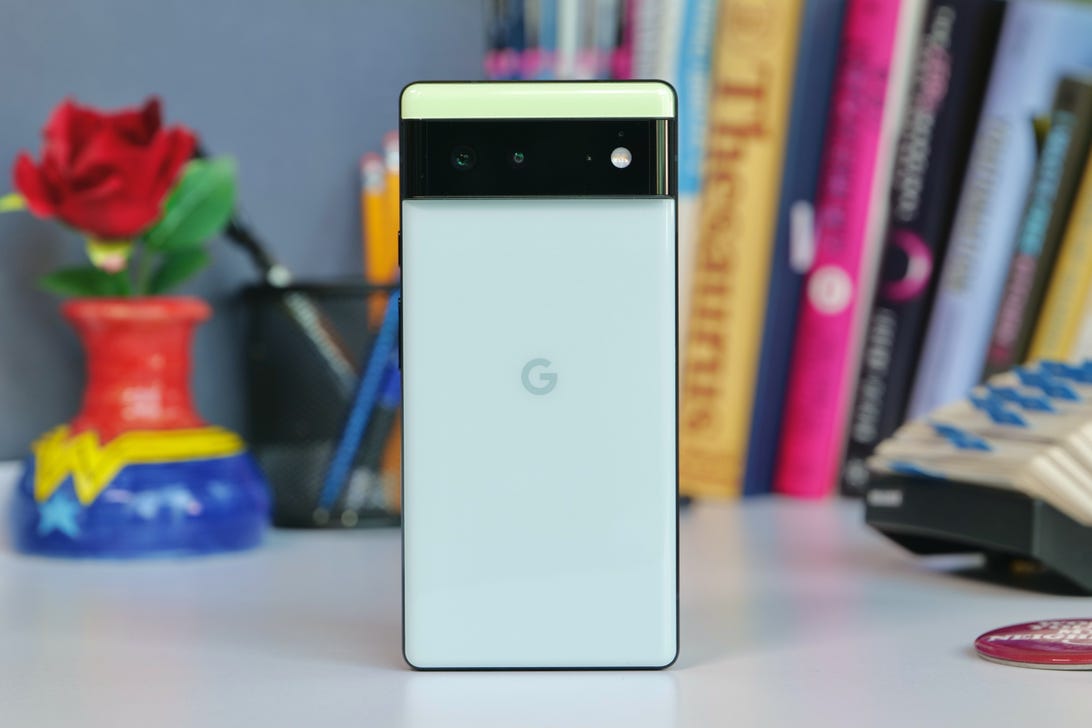
At $599, the Google Pixel 6 is one of the best phones you can buy.
Patrick Holland/CNET
The Pixel 6’s bold two-tone design makes me swoon
The Pixel 6 has a 6.4-inch, 1080p screen. It can be set to automatically switch from 60Hz to 90Hz depending on the content onscreen. There’s an hole-punch cutout for the selfie camera and the screen is flat with thick, Sharpie-like bezels that bleed into the matte-finish aluminum sides. For comparison’s sake, it reminds me a bit of the iPhone XR and iPhone 11, which also had similar bezels and rounded sides, and that’s not necessarily a bad thing.
In use the screen is pleasant. The resolution is good, but the Pixel 6 Pro’s is better.
The front is covered in Gorilla Glass Victus. Under the screen is a fingerprint reader, which at first worked for me half of the time. It was frustrating and not a very good experience. After a maddening few days, I double-registered my thumbprints and it worked nearly every time. Now I don’t even need to smash my finger into the screen.
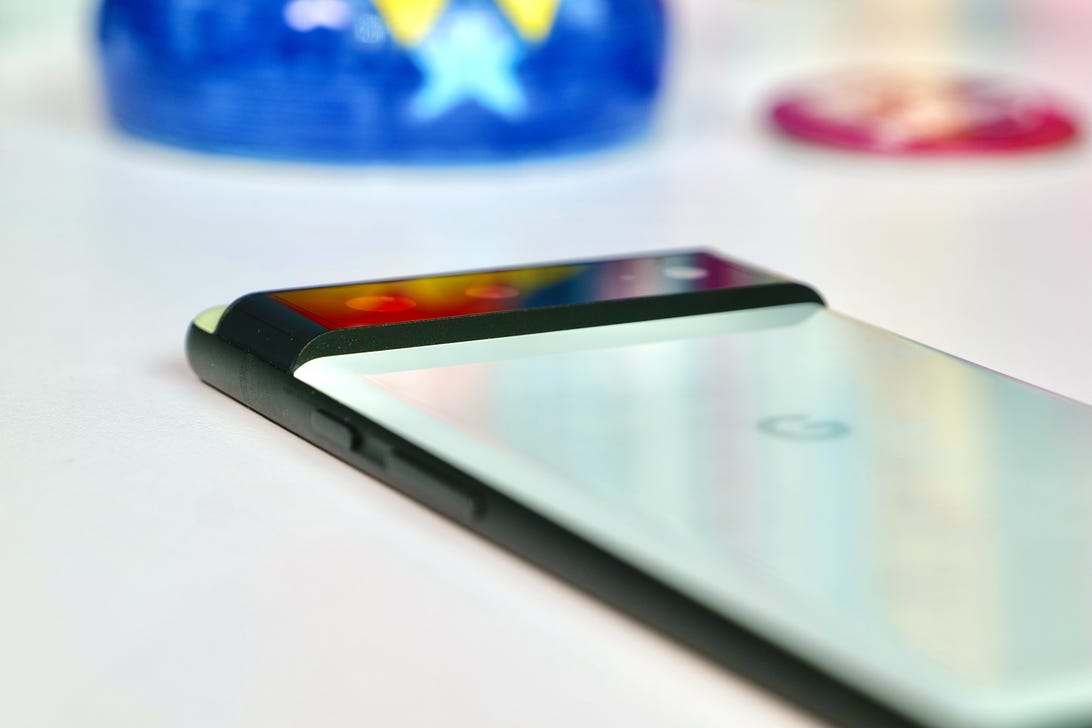
My review unit’s color is called Sorta Seafoam. The back below the camera bar is light gray but depending on the light it can look light blue.
Patrick Holland/CNET
The back is where the phone’s design really makes me swoon. It’s made of Gorilla Glass 6 and has a two-tone color scheme. My review unit is Sorta Seafoam, which means the bottom of the back is sort of light gray or sort of light blue depending on the lighting. The top back strip is a light lime green, which contrasts nicely against the deep black of the camera bar. The overall look of the Pixel 6 reminds me a tad of the Pixel 2 XL and its panda color.
The horizontal camera bar runs across the width of the back and looks bold and different. The camera bar isn’t just designed to be a Google branding element; you can put the Pixel 6 without a case on a table and it doesn’t wobble.
Overall, the fit and finish are nice. If you grab a Pixel 6 Pro, which costs $300 more, you can see several small ways it feels more premium than the Pixel 6.

The camera bar houses a main wide-angle camera and an ultrawide-angle camera.
Patrick Holland/CNET
The Pixel 6 takes amazing photos
Out of all the improvements, I was most hyped to try the Pixel 6’s cameras, and Google definitely delivered. The Pixel 6, with its higher-specced lenses and sensors, takes fantastic photos. Let me immediately undercut that to remind you that this is still a phone. A mirrorless camera or DSLR can consistently take better photos in a wider range of lighting and conditions. But people don’t always have a mirrorless camera with them.
The Pixel 6 has two rear cameras: a main camera with a wide-angle lens and a second camera with an ultrawide-angle lens. These are the exact same wide and ultrawide cameras found on the Pixel 6 Pro. The ultrawide camera offers 0.7x magnification instead of the 0.6x magnification on the Pixel 5. Overall the ultrawide is good but not great. Details in photos are OK but often soft.
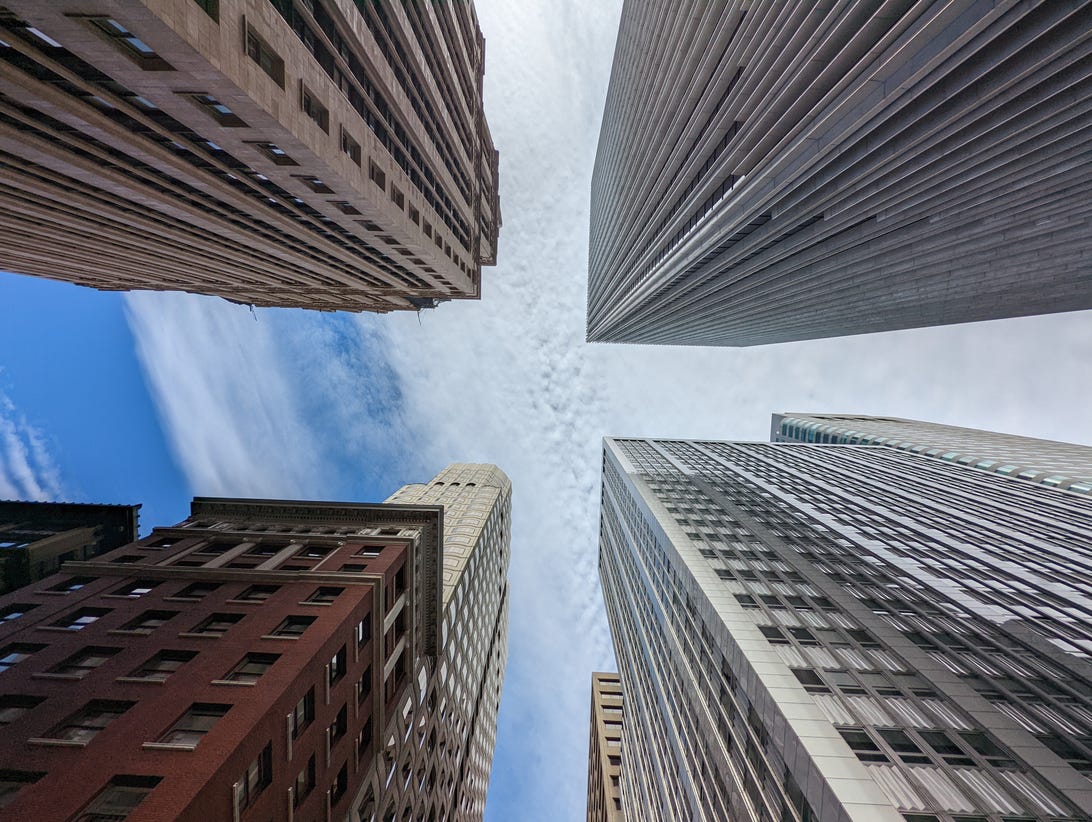
Under bright soft lighting, the ultrawide can capture some decent photos.
Patrick Holland/CNET
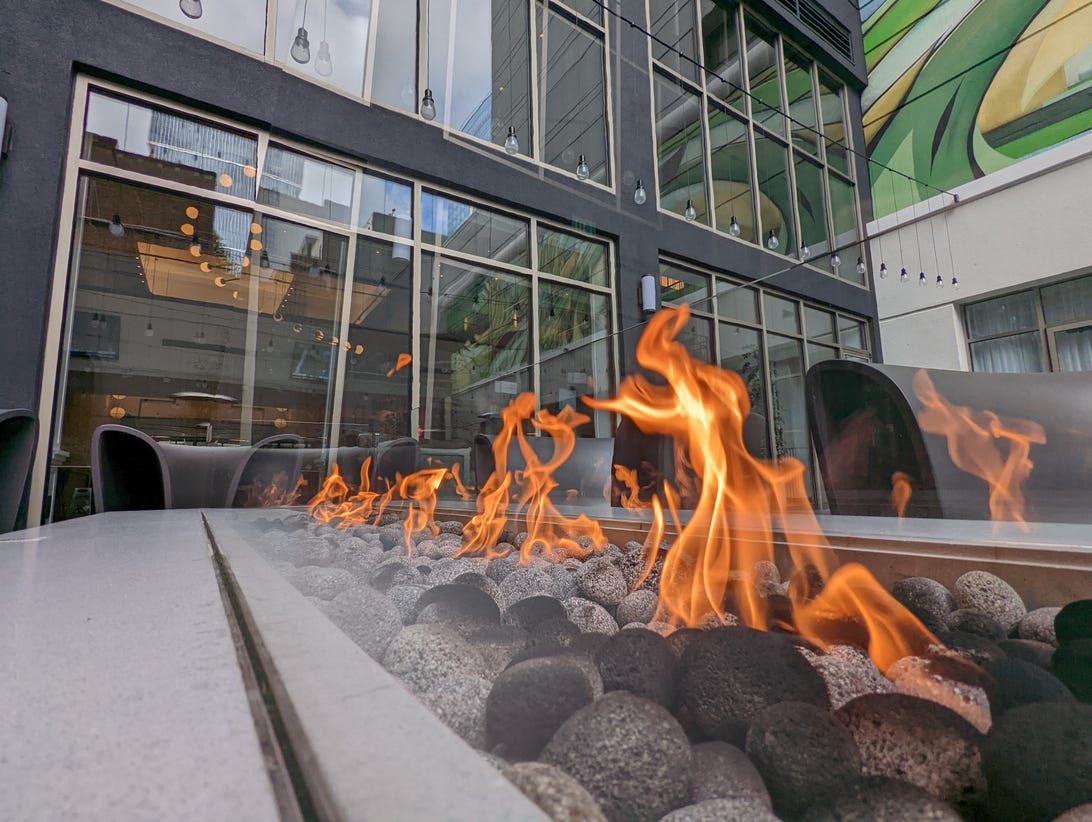
Check out the highlights in the flames.
Patrick Holland/CNET

The dynamic range is decent but limited.
Patrick Holland/CNET

In bright lighting, the ultrawide is capable of good skin tones.
Patrick Holland/CNET

In medium to low-light situations like here, the ultrawide shows its limits.
Patrick Holland/CNET
There is a noticeable step down in quality going from the main camera to the ultrawide. Take a look at the photos below that I took of the Transamerica building in San Francisco.
I wish the ultrawide camera were wider. I prefer the perspective from the ultrawide cameras on the Galaxy S21 Ultra and iPhone 13 Pro more. Check out a comparison below.
The main camera has a 50-megapixel sensor, which uses pixel binning to create 12.5-megapixel pictures. Photos from the Pixel 6 are amazing. Details are great.

The colors and clarity in this photo are excellent and accurate.
Patrick Holland/CNET

For a phone, the Pixel 6 has an excellent dynamic range.
Patrick Holland/CNET
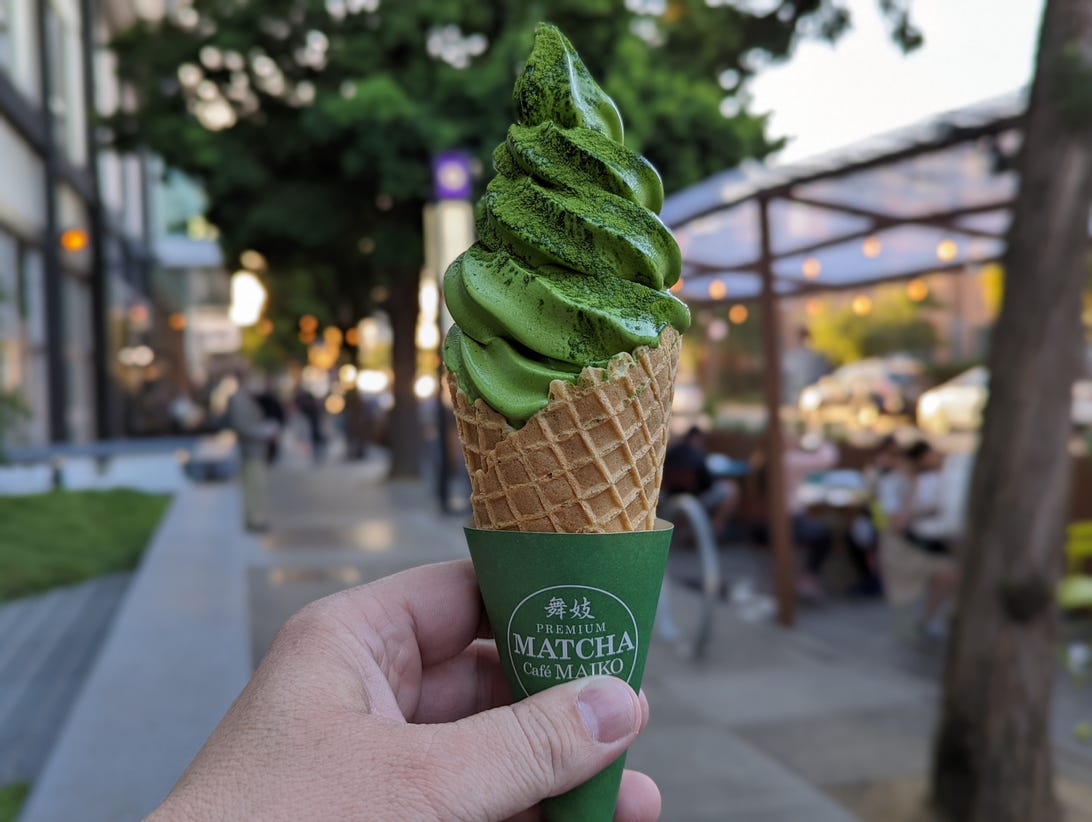
Look at the colors and detail of this matcha ice cream cone.
Patrick Holland/CNET

Another example of the Pixel handling a wide dynamic range well.
Patrick Holland/CNET
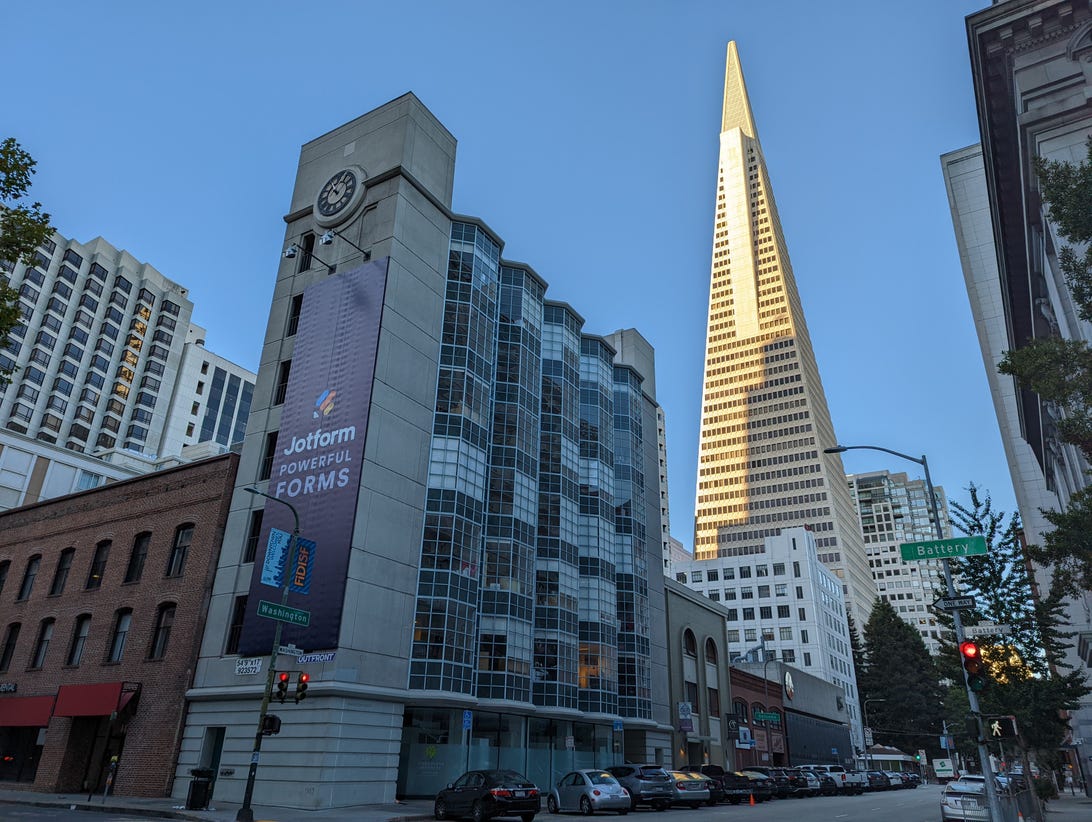
Notice the contrast of the details in direct sunlight and those in the shadows.
Patrick Holland/CNET
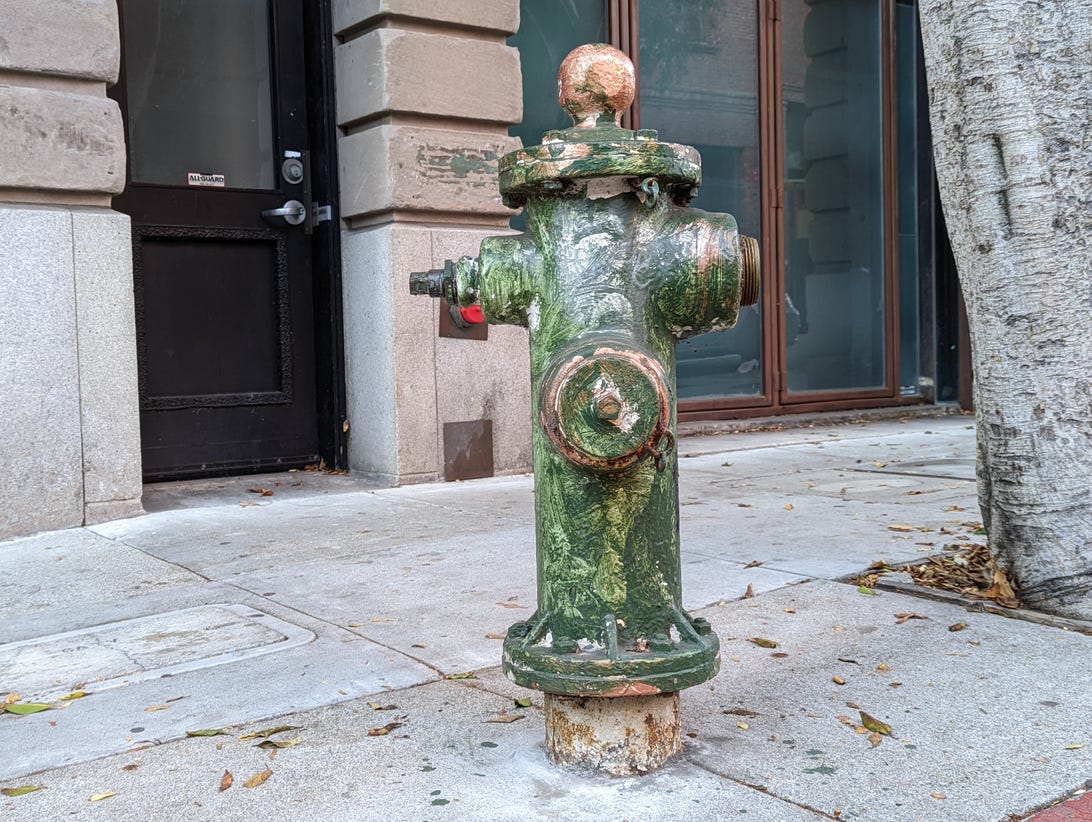
Textures look outstanding. Check out the paint brush marks on the old fire hydrant.
Patrick Holland/CNET

I like how the Pixel captured the texture of the fur on each dog.
Patrick Holland/CNET

In medium and low light, I noticed some ghosting and flaring when a light source is in the frame, like the cafe string lights here. This wasn’t problematic and not nearly as bad as some other phones sold today.
Patrick Holland/CNET
There are so many Pixel 6 camera modes and tools
Google’s Tensor chip allows for even more camera modes and tools. There is Night Sight, Google’s version of combining multiple images together when it’s too dark. It’s excellent on the Pixel 6.

I like the dramatic way Night Sight renders photos.
Patrick Holland/CNET
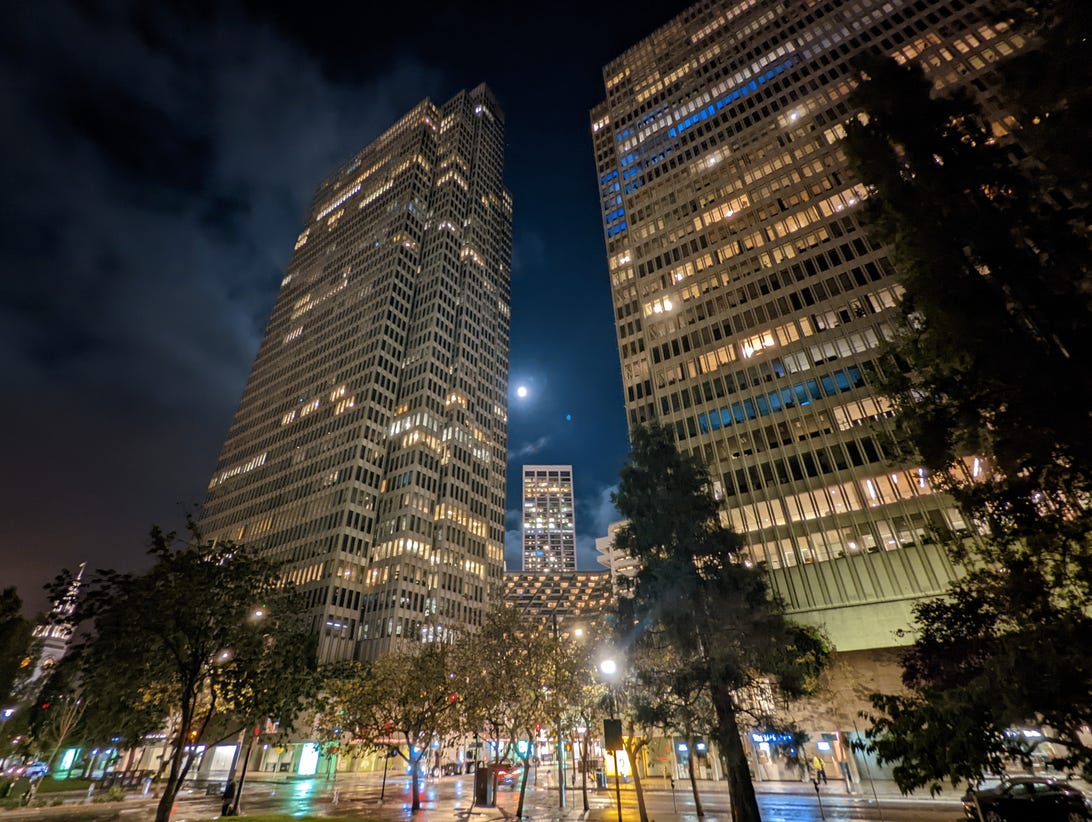
This Night Sight photo was taken with the ultrawide camera.
Patrick Holland/CNET

In real life, this was pretty much all in shadow aside from the light and windows.
Patrick Holland/CNET
There’s the new Motion mode, which has two options: Action Pan and Long Exposure. Action Pan gives the background of a photo a dramatic motion blur. It’s fun. It’s not going to reinvent photography but it’s pretty fun to use.

Action Pan can take what might be an otherwise ordinary photo and add pizzazz.
Patrick Holland/CNET
The second Motion mode is Long Exposure, which mimics a long-exposure photo. There are apps that do something similar but I got some decent light trails from traffic and some silklike water from a fountain. Again, it’s fun. It doesn’t replace doing long-exposure photography on a dedicated camera.
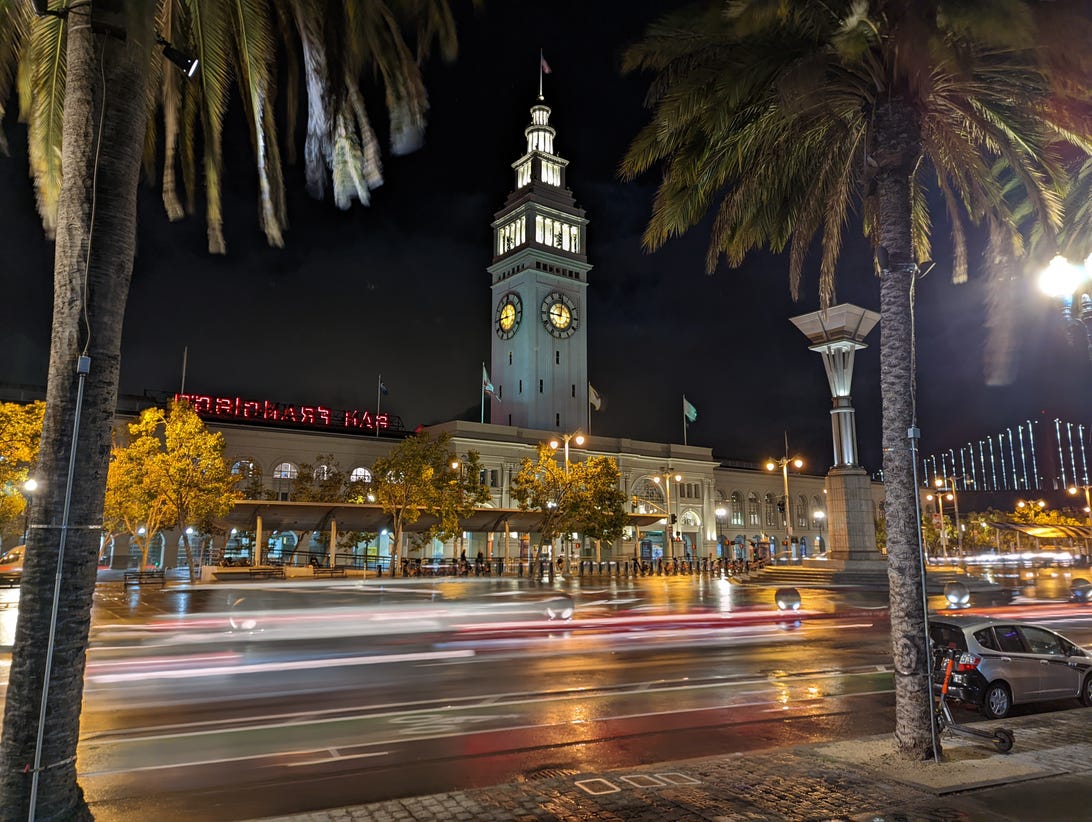
Google’s Motion mode for Long Exposure works well enough. It’s similar to converting a Live Photo in iOS to Long Exposure.
Patrick Holland/CNET
But that’s not all. Google gives you a neat tool called Magic Eraser. It lets you pick an object, a person or a part of a photo to remove. You can get to this tool in one of two ways. In Photos, you’ll see a suggestion about removing people in the background. Or when you go…
